Rail Live 2024 featured numerous innovative products - big and small - that will improve safety, accessibility, efficiency and productivity on the railway. Chris Howe selects his top 20…
1 Pandrol: Aluminothermic Welding
Rail Live 2024 featured numerous innovative products - big and small - that will improve safety, accessibility, efficiency and productivity on the railway. Chris Howe selects his top 20…
1 Pandrol: Aluminothermic Welding
Of the many live demonstrations that take place during Rail Live, ones which always draw the crowds are those that show off aluminothermic welding (thermite welding) . This year was no different, with industry leader Pandrol demonstrating a range of new tools to streamline the process and make it safer. From the battery-powered Startwel igniter, which starts the 2500°C reaction, to the innovative compact pre-heater which uses propane to heat the rail ends to 800°C, in readiness for welding to take place.
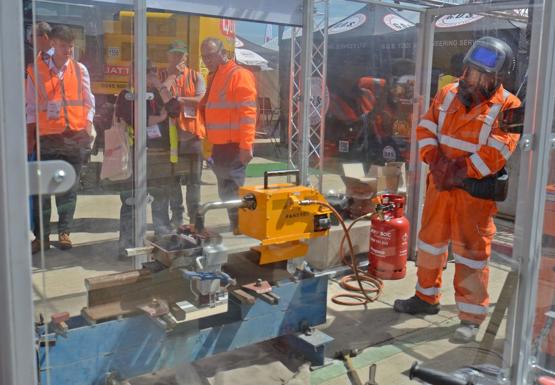
2 Enerpac RP70A
Usually, before two sections of rail are welded together, they are first “stressed” - a process which involves using hydraulics to pull the two rail ends together. A piece of equipment such as an Enerpac RP70A stressor may be used. This lightweight modular system has a pull rating of up to 70 tonnes, but is 25% lighter than previous models. This lightweight design makes it safer and easier for workers to handle and assemble.
3 Husqvarna K 1 PACE
Battery technology has developed at pace over the past five years, and now many larger hand tools on offer are battery-powered, rather than being powered by two-stroke engines. The Husqvarna K 1 PACE rail cutter is one such piece of equipment, able to make between four and five cuts on a single charge. This would be sufficient to cut a section of rail before stressing.
4 Linsinger SF02-FS
One of the larger pieces of equipment on display was Linmag’s road-rail milling truck, constructed by Austrian manufacturer Linsinger. At the front is a MAN TGS tractor unit capable of transporting the milling machine by road to wherever it is needed. Then, once in rail mode, the vehicle drives in reverse, with the self-propelled trailer providing the traction - all while milling and grinding the rails at up to 20mph. This particular machine spends much of its time in Ireland, but has recently been used to re-profile DLR rails.
5 Geismar Toyota Hilux
Much of the equipment on display is brand new and is sometimes being shown for the first time at Rail Live. This was true for the Toyota Hilux, which RRV specialist GEISMAR has modified. The pre-production unit is the first Toyota Hilux to be converted for rail use in the UK, and will be used to gauge industry reaction with scope to make improvements before the vehicle is signed off for railway use. The versatile vehicle can be configured to carry equipment or up to eight rail workers in the back. In addition, in rail mode, it can pull two rail trailers with a gross weight of up to 16 tonnes.
6 Readypower Force One
Force One, now part of Readypower Group, had a range of suction excavator machines on display. Of particular interest was its unique ‘rail-bases suction excavation system’ (RSES), which marries a road-rail excavator to a trailer capable of vacuuming ballast and storing up to ten tonnes at a time. The benefit of this system is that it can discharge excavated ballast via a conveyor at the rear into waiting standard ballast wagons, while vacuuming operations continue at the front.
7 Hedge cutter
Until recently, to clear vegetation, an excavator or tractor-mounted flail was the tool of choice. But while efficient, it does not cut cleanly and produces a lot of flying debris, which can be hazardous. Now, however, there is a range of reciprocating brush cutters available that are quieter and safer to operate. This particular brush cutter, fitted to one of Explore’s Liebherr 924s, has a length of 2.4 metres and can cut branches with a diameter of up to 150mm.
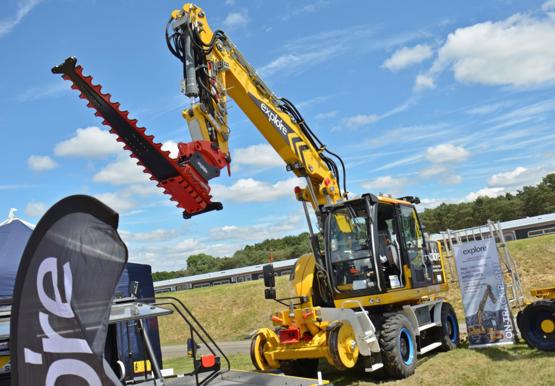
8 Milwaukee tools
Some of the equipment on display was more modest, but no less important. For example, Milwaukee had a range of hand tools on display, including a pole trimmer, as well as other tools used for vegetation management. The range includes battery-operated hand tools, with the likes of the strimmer able to last up to 45 minutes on a single charge, while the battery-powered chainsaw can make up to 150 cuts per battery.
9 Hilti EXO-T
One piece of equipment which seemed to garner a lot of attention was the Hilti EXO-T22 tool balancer. The EXO-T is worn much like a backpack and can be used to hoist and hold tools weighing up to 17kg. It is primarily designed to be used for horizontal drilling and breaking, with the main benefit being that it reduces shoulder strain and lower back pain from hours of repetitive work.
10 Prinoth Panther
TRU RENT, part of the TRU7 group, has only recently entered the rail sector. But it has plant at its disposal which could be invaluable to the industry, especially with climate change causing wetter conditions in the UK. For example, its Prinoth Panther tracked dump truck could be incredibly useful, as it has a minimal footprint on the ground when compared with traditional forward-facing dump trucks. The vehicle on display had a ten-tonne capacity, although variants with a capacity of 14 tonnes are available. The dump trucks can travel at relatively high speeds over most terrain and can rotate on the move - meaning that no reversing manoeuvres are required, further reducing the impact on the ground.
11 SPH Plant Trac-Jet
Another tracked vehicle on display which could also be invaluable as conditions become wetter was the ‘Trac-Jet’, which SPH Plant Ltd uses to jet drains and culverts. As with the Prinoth Panther, it has wide tracks, which makes it ideal for accessing difficult-to-reach locations, no matter the conditions. The vehicle on display was a jetting unit with a tank capacity of 15,000 litres, but SPH Plant also has at its disposal a tracked suction vehicle, called the Trac-Vac.
12 OnSite Rail Services UV lining
Speaking of drainage, OnSite Rail Services was demonstrating a way to renew trackside drains and culverts without the need to excavate or ‘pipe pull’, which can be costly and disruptive. The system involves inserting a liner filled with a fibreglass resin into the pipe, that is inflated using compressed air. Then the resin is hardened with a UV light attached to a special trolley system. Once hardened, the fibreglass forms a completely new lining within the pipe, which greatly extends its life.
13 Menzi Muck
One of the more unusual-looking pieces of equipment on display was the Menzi Muck M545X excavator. This impressive piece of equipment is ideal for working on difficult-to-reach locations such as embankments. This year, Exc@v8 (the Menzi Muck UK dealer) had on display a road-rail vehicle variant. The conversion was developed in conjunction with UK-based KING Rail, which specialises in servicing, refurbishing and converting vehicles for rail use. The M545X RRV on display is not yet certified for railway use, but it is hoped that it will be cleared for use by August or September this year.
14 Coombes Sennebogen 728e
Another piece of equipment which is ideal for reaching difficult-to-access locations is the Sennebogen 728e long-reach wheeled excavator. With a maximum reach of 21 metres and fitted with a grapple saw, it is ideal for felling difficult-to-reach trees, such as those on steep embankments.
15 Rail Ability undercutter
One pleasant surprise is just how much equipment is designed and built here in the UK. Equipment such as this one-of-a-kind road-rail undercutter, built by Stafford-based Rail Ability (part of the AP Webb Group). The undercutter can remove ballast from beneath plain line rail at a rate of two metres per minute.
16 RUAS weed-spraying drone
A perennial problem which seems to be worsening is the increasing spread of invasive plant species, which not only look unsightly but can cause lasting damage to railway structures. Unfortunately, species such as buddleia can grow in the most difficult-to-reach places that can often only be dealt with by shutting the railway and bringing in specialist access equipment.
However, RUAS now has a cutting-edge solution which not only makes dealing with weeds a lot safer, it also has the potential to drastically cut the costs of dealing with hard-to-reach weeds.
RUAS is the only company in the UK licensed to fly drones that can carry and spray herbicide. Spraying is achieved using a unique system designed by RUAS, which uses 3D printed parts that can be adapted to fit a range of drones.
17 Belvoir Rail
Last year, a Boston Dynamics “Spot” was displayed within the Network Rail Innovation Hub. Since then, Belvoir Rail has been exploring ways in which the ‘robodogs’ could be used practically within the rail sector (RAIL 1010). It is in the process of developing a robot based on the Unitree B2, a robust robot able to carry payloads of up to 60kg and which could carry equipment or be fitted with cameras and lidar used to carry out inspections. It is not yet ready for use on the railway, but there are real-world rail applications to which the B2 could be ideally suited.
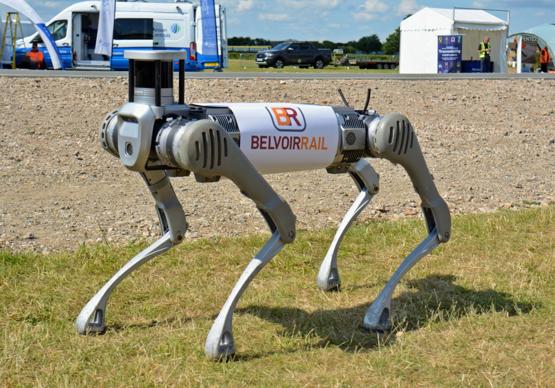
Electrification
With the need to decarbonise being one of the rail industry’s biggest priorities, it was no surprise that plenty of electrification equipment was on display - some tried and tested, and other equipment new to the UK.
18 Colmar T10000FS
Although England seems to have been slow to adopt a rolling programme of electrification, Scotland is forging ahead with plans to electrify its network. To undertake this work, which will take until 2030 and beyond, SPL Powerlines (which will be responsible for electrifying much of the Scottish system) has recently purchased a Colmar T10000FS rail loader. This 33-tonne machine has been fitted with a hydraulic hammer that will be used to install hundreds of ‘610’ piles over the coming years. The benefit of the T10000 is that it can slew the three-tonne hammer to the side without needing to deploy supports.
19 Weenk Wing Screw Foundation
‘610 piles’, named after their 610mm diameter, have been the industry standard for decades. Used to support OLE masts, they are usually between 3.5 metres and 6.5 metres in length and are hammered into using hydraulic hammers. 610 piles are tried and tested, but they do come with a large embedded carbon cost, owing to the amount of steel used in their construction.
However, Weenk Infra Foundations (WIF) is now hoping to provide a much more streamlined product to the UK market - one which can withstand much greater horizontal loads, yet uses much less steel. What’s more, installation of the ‘wing screw foundation’ (WSF) can be carried out much quickly and causes less noise during installation.
To install the WFS, it is first screwed into the ground (which does require a special attachment, but starting the pile in this way is quicker and therefore more efficient). To drive the WFS the final two metres (approx) into the ground requires a high-frequency piling attachment. High-frequency piling is quieter and has less of an impact on the ground than low-frequency piling.
The lightweight nature of the foundation screws also means that up to 36 can be carried on a single articulated lorry, compared with only six 610 piles per HGV.
Around 2,000 foundation screws have already been successfully installed in the Netherlands and are soon to be used during the electrification of the track at Long Marston. They do not require approval for use in the UK, but require specific tools to install and are quite different to 610 piles, so it may be some time before the British rail industry adopts them.
20 Siemens Sicat SX
Piling isn’t the only area where companies are continuing to innovate in an attempt to reduce the cost of electrification in the UK. To that end, Siemens has developed a cantilever which could provide efficiencies of up to 40%.
Several small but important changes have been implemented, which means the cantilever can support a catenary span of up to 112 metres compared with between 65 metres and 74 metres, which is currently the standard in the UK.
The cantilever looks very familiar to anyone who has ever paid them any attention, but there are subtle differences - such as using a smaller contact wire and thicker catenary wire, meaning the contact wire has a smaller profile.
The catenary and contact wires are also offset, rather than being aligned vertically. This means that the droppers (the vertical wire that supports the contact wire) not only provide vertical support, but can also resist lateral movement. The adaptations mean that the contact wire and catenary can resist lateral forces caused by the wind, so much longer spans can be achieved on straight-track sections.
About the author: Chris Howe is a freelance transport journalist with special interest in transport civil engineering projects, and a prolific pro-rail campaigner.
For full pictorial versions of articls like this Subscribe today and never miss an issue of RAIL. With a Print + Digital subscription, you’ll get each issue delivered to your door for FREE (UK only). Plus, enjoy an exclusive monthly e-newsletter from the Editor, rewards, discounts and prizes, AND full access to the latest and previous issues via the app.
Login to continue reading
Or register with RAIL to keep up-to-date with the latest news, insight and opinion.

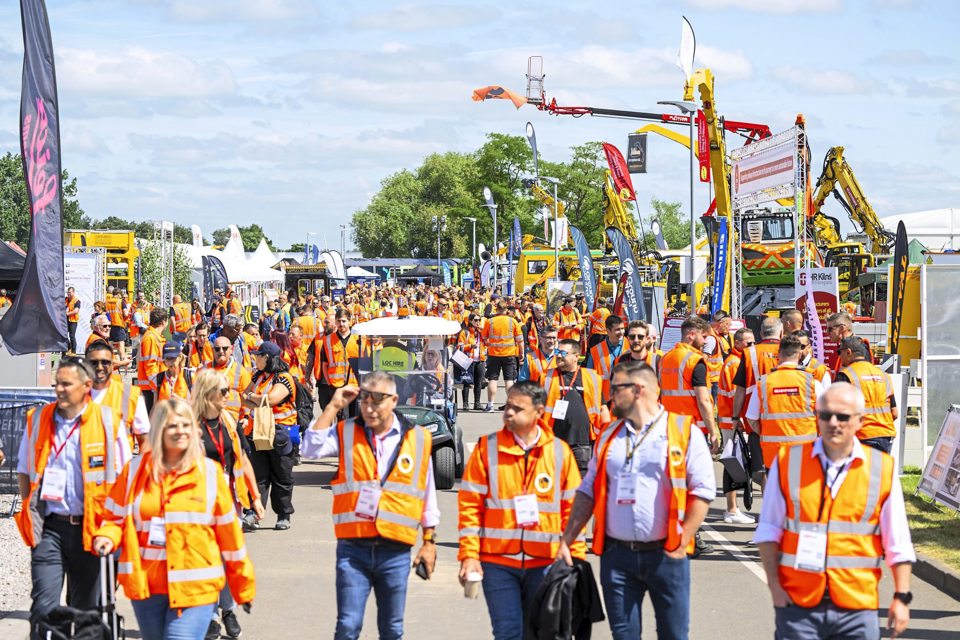
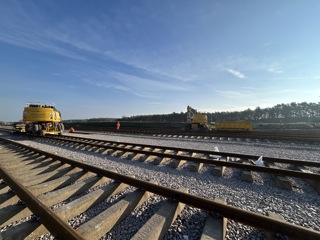
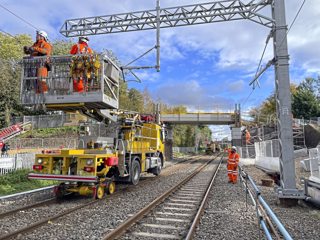
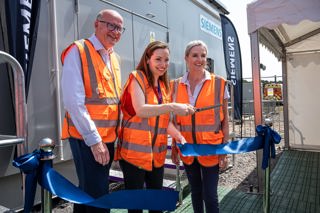
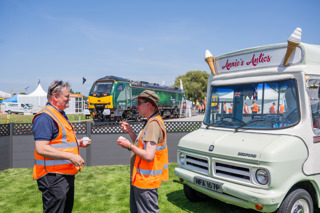
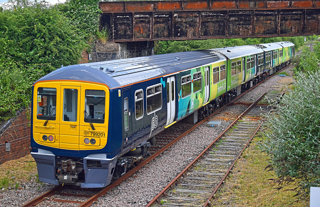











Login to comment
Comments
No comments have been made yet.